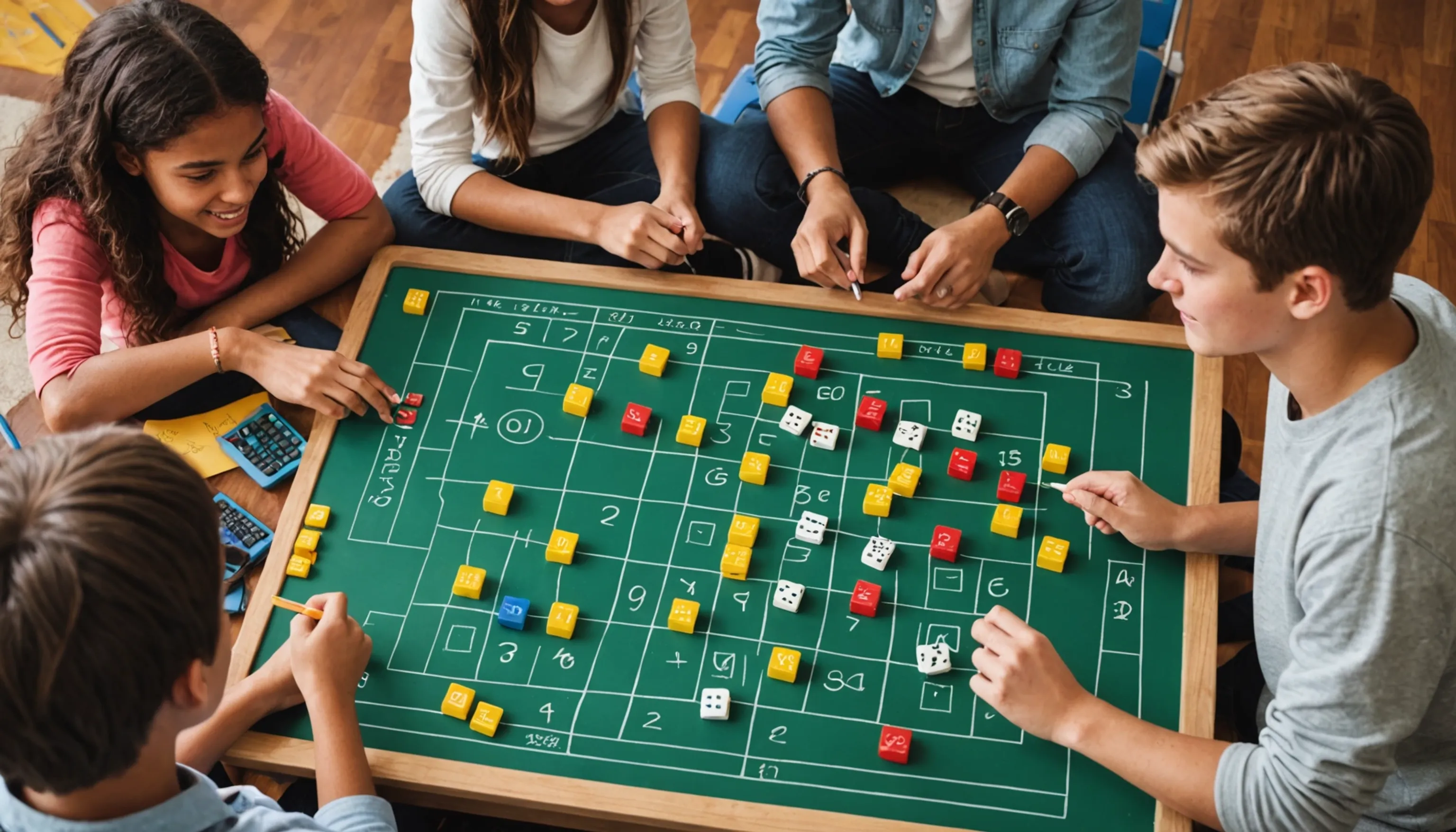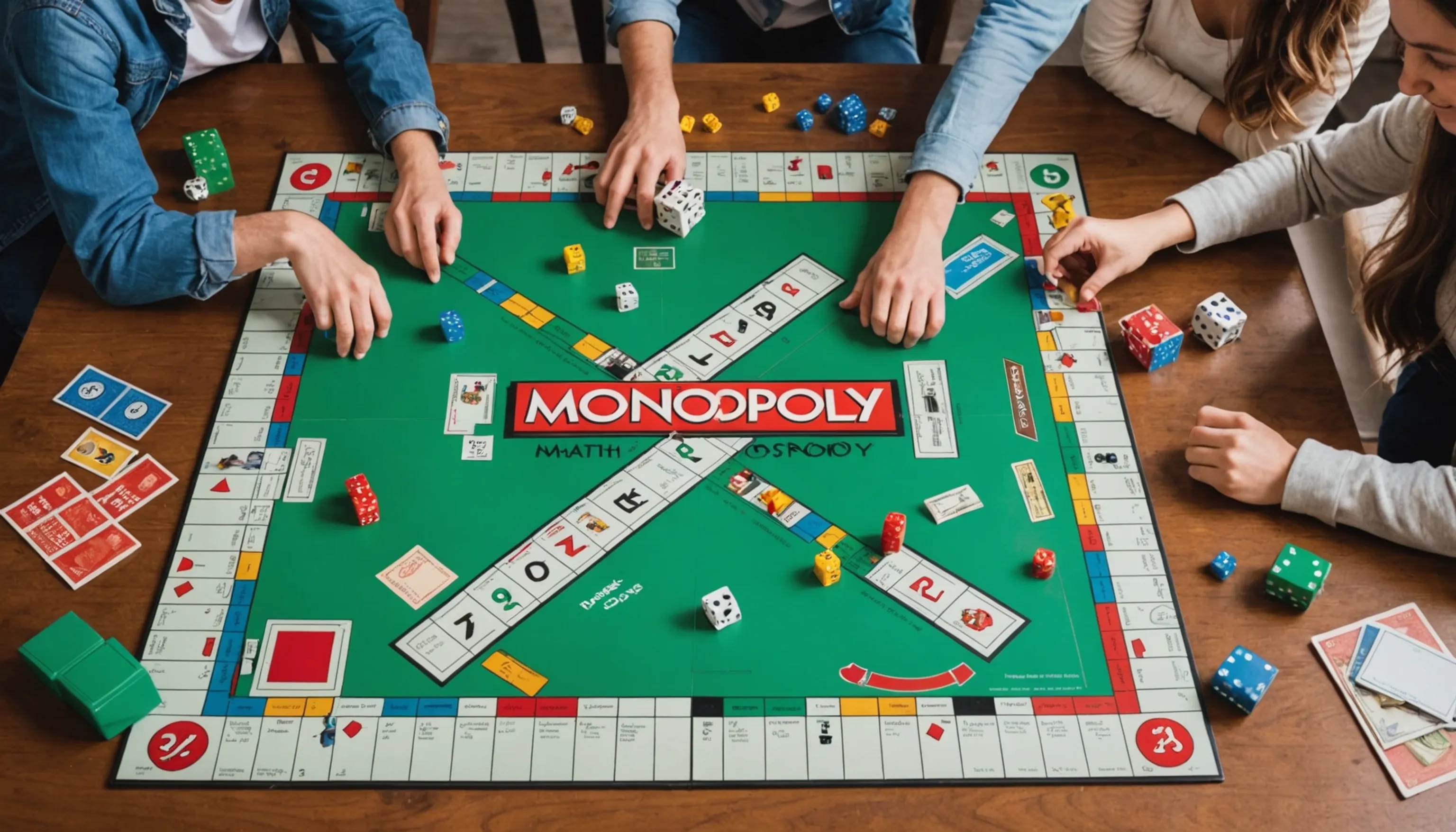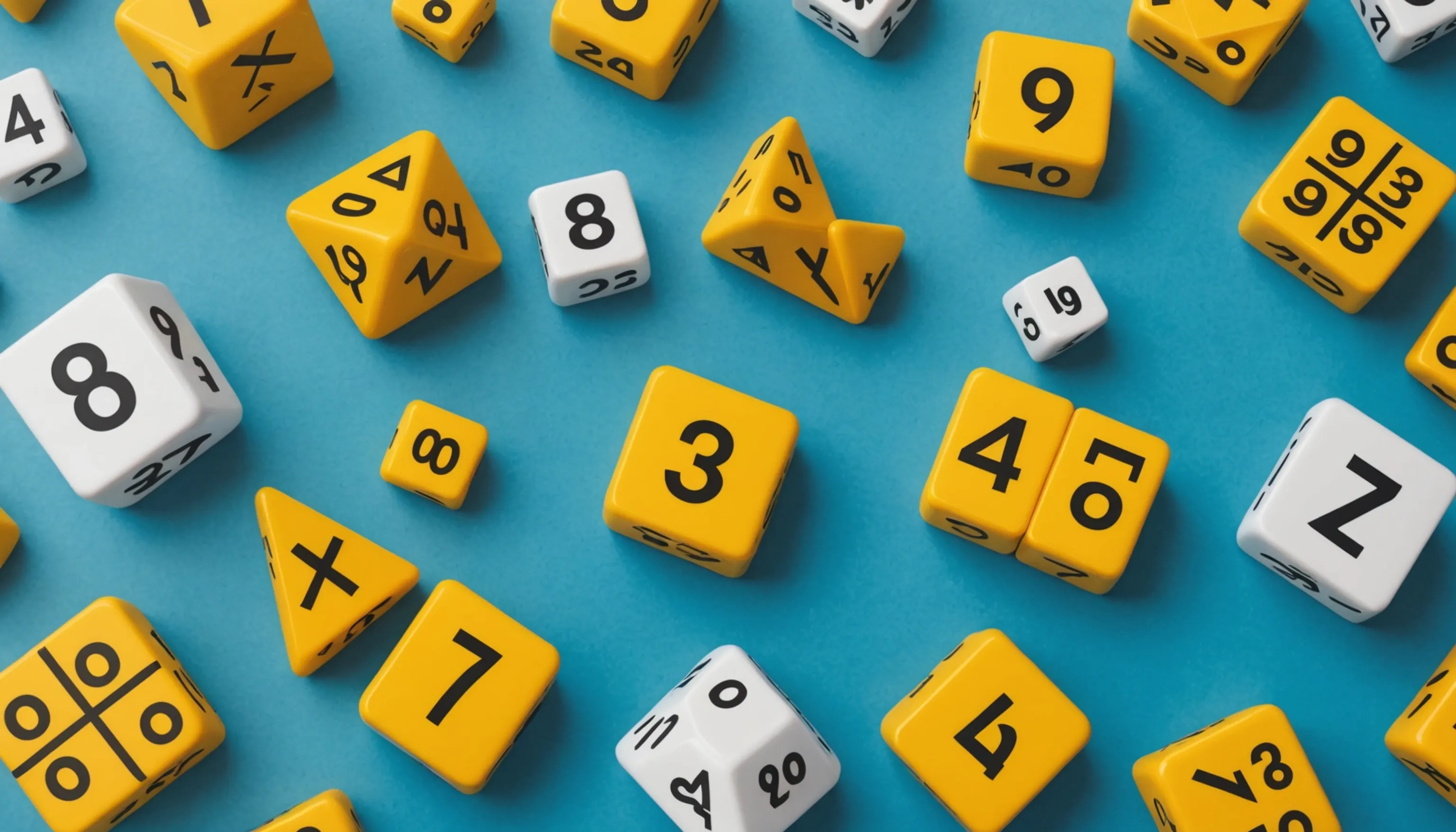Creative Ways to Teach Math Using Games
 HvWHenry van Wagenberg
HvWHenry van Wagenberg
Creative Ways to Teach Math Using Games
Teaching math through games offers an engaging and interactive approach that resonates with teenagers. One of the most effective creative ways to teach math using games is to incorporate elements of competition and teamwork. By utilizing both board games and online math games, students can practice their math skills in a fun environment. Games like math puzzles and riddles not only challenge their problem-solving abilities but also foster critical thinking. Additionally, incorporating math into everyday activities, such as cooking or shopping, can make learning relevant and practical. This method keeps students motivated and eager to learn.
Benefits of Using Games to Teach Math
Using games to teach math presents numerous benefits that enhance learning for teenagers. Firstly, games create an engaging environment that motivates students to participate actively in the learning process. When math concepts are presented in a fun and interactive way, teenagers are more likely to retain information and develop a positive attitude toward math.
Secondly, games foster critical thinking and problem-solving skills. Many math games require players to think strategically, analyze situations, and make quick decisions, which are essential skills not only in math but in real-life scenarios. This approach encourages deeper understanding rather than rote memorization.
Moreover, games promote collaboration and teamwork. When students play in groups, they learn to communicate effectively, share ideas, and work together towards a common goal. This social interaction enhances their interpersonal skills while reinforcing mathematical concepts.
Another significant advantage is the adaptability of games to different learning styles. Whether a student is a visual learner, auditory learner, or kinesthetic learner, there are various games available that cater to their unique needs. For instance, some may benefit from board games that provide a tactile experience, while others might prefer online math games that offer instant feedback and rewards.
Finally, games make math practice enjoyable, reducing anxiety associated with the subject. This positive reinforcement can lead to improved performance and greater confidence in math abilities.
Types of Math Games for Teenagers
There are several types of math games that effectively engage teenagers and enhance their math skills. One popular category is board games, which often incorporate math concepts into their gameplay. Games like Monopoly or Prime Climb require players to use addition, subtraction, and strategic thinking.
Another effective type is online math games, which provide interactive and immersive learning experiences. Websites like Kahoot! and Prodigy allow students to compete and practice math in a fun, engaging environment.
Additionally, card games such as Set and Math War are excellent for practicing skills like number recognition and quick calculations. Finally, incorporating math challenges into everyday games like sports can make learning relevant and practical, as students use math to keep score or calculate statistics.

Board Games That Enhance Math Skills
Board games are an excellent way to enhance math skills in teenagers while keeping the learning process fun and engaging. Here are some popular board games that enhance math skills:
- Monopoly: This classic game teaches players about money management, addition, and subtraction as they buy, sell, and trade properties. Players must calculate rents, property values, and make strategic financial decisions.
- Prime Climb: A colorful mathematical board game that focuses on prime numbers and arithmetic operations. Players move their pawns based on the results of dice rolls, reinforcing basic math concepts while aiming to reach the center of the board.
- Sum Swamp: Designed for younger teenagers, this game combines addition and subtraction in a fun swamp-themed adventure. Players navigate through the swamp by solving math problems, making it an engaging way to practice basic math skills.
- Set: This fast-paced card game develops pattern recognition and critical thinking skills. Players must identify sets of three cards that share or differ in specific attributes, encouraging logical reasoning and quick decision-making.
- Math Dice: This game encourages mental math skills through rolling dice and creating equations to reach a target number. It’s competitive and helps improve quick calculation abilities.
Incorporating these board games into learning can significantly boost teenagers' math confidence and abilities.
Online Math Games for Interactive Learning
Online math games offer an interactive and engaging way for teenagers to develop their math skills while having fun. These games combine technology with educational content, making learning more appealing. Here are some notable online math games for interactive learning:
- Kahoot! – This platform allows teachers to create quizzes that students can participate in using their devices. Kahoot! not only makes learning competitive but also encourages quick thinking and collaboration, as students race against each other to answer questions correctly.
- Prodigy Math – A role-playing game that integrates math practice into its gameplay. Students navigate through a fantasy world, solving math problems to progress. This game adapts to each student's learning level, ensuring personalized and effective practice.
- Math Playground – This website offers a variety of math games, puzzles, and logic challenges that cater to different skill levels. With interactive problem-solving tasks, students can enhance their understanding of various math concepts.
- Coolmath Games – This platform features numerous math-related games designed to make learning enjoyable. From strategy games to logic puzzles, students can explore different areas of math while developing critical thinking skills.
- IXL – An adaptive learning platform that provides practice in various math topics. IXL tailors questions to each student’s proficiency, offering immediate feedback and progress tracking.
These online math games not only make learning fun but also help teenagers build confidence in their math abilities.
Incorporating Math into Everyday Games
Incorporating math into everyday games is an effective strategy to enhance teenagers' math skills in a natural and enjoyable way. Everyday activities can easily be transformed into learning opportunities. For instance, while playing board games like Monopoly, players can practice addition and subtraction as they buy properties and calculate rents.
Sports can also be a rich source of math practice. Keeping score in basketball or calculating averages in baseball involves arithmetic skills, making math relevant and practical. Additionally, cooking provides a wonderful opportunity to teach measurements and fractions, as teens follow recipes and adjust ingredient amounts.
Even simple card games can be adapted to include math challenges. For example, using a standard deck to play War can help with quick calculations by comparing card values. By integrating math into everyday games, parents and teachers can foster a positive attitude toward math while making learning seamless.

Using Card Games to Practice Math
Card games are a fantastic way to practice math skills in an engaging and interactive manner. They can be easily adapted to suit various age groups and learning levels, making them a versatile tool for parents and teachers alike. Here are some effective ways to use card games to practice math:
- Math War: This classic game involves two players flipping over cards simultaneously. The player with the higher card wins, but to add a math twist, players can multiply or add the values of the cards to determine the winner. This game helps with number recognition and basic arithmetic.
- Set: A unique card game that develops pattern recognition and logical reasoning. Players must identify sets of three cards that share or differ in specific attributes, enhancing critical thinking and visual-spatial skills.
- 21 (Blackjack): This popular casino game can be modified for educational purposes. Players aim to get as close to 21 as possible without going over, practicing addition and strategic thinking as they decide whether to hit or stand.
- Go Fish: By using addition or subtraction, players can modify this game to include math questions. For example, instead of asking for a specific card, they can request cards that add up to a certain number.
Using card games to practice math not only reinforces essential skills but also creates a fun and competitive learning environment that keeps teenagers engaged.
Math Challenges in Sports and Competitions
Integrating math challenges into sports and competitions offers a dynamic way to engage teenagers while reinforcing their math skills. By applying mathematical concepts in a familiar and exciting context, students can see the practical applications of math in real life. Here are several ways to incorporate math challenges in sports and competitions:
- Scoring Systems: Many sports, such as basketball and soccer, have complex scoring systems that require players to calculate points and averages. Coaches can encourage players to keep track of their statistics, such as points per game or free throw percentages, promoting skills in data analysis and basic arithmetic.
- Statistics and Probability: Understanding player statistics, like batting averages in baseball or shooting percentages in basketball, involves analyzing data and making predictions. Students can be challenged to calculate probabilities, such as the likelihood of a player scoring based on historical data.
- Time Trials: In track events, students can measure their times and calculate averages or improvements over the season. This practice not only enhances their timing skills but also teaches them about performance metrics.
- Math Relays: Organizing math relays where teams solve math problems related to sports can create a competitive atmosphere. Each correct answer allows the team to advance to the next station, blending physical activity with math practice.
By incorporating math challenges into sports, teenagers can develop critical thinking and analytical skills while enjoying their favorite activities.
Creating Custom Math Games at Home
Creating custom math games at home is a fantastic way to engage teenagers in learning while having fun. These games can be tailored to fit individual interests and skill levels, making math practice enjoyable and effective. Start by identifying specific math concepts that need reinforcement, such as fractions, geometry, or algebra.
One idea is to create a math scavenger hunt. Write math problems on cards and hide them around the house. As teens solve each problem, they receive clues leading to the next location. Alternatively, design a math board game using a simple board layout. Players can roll dice and move spaces while answering math questions corresponding to each space they land on.
Using everyday items like cards, dice, or even household objects can make the games more relatable. This hands-on approach not only reinforces math skills but also fosters creativity and critical thinking.
DIY Math Board Games
Creating DIY math board games is an excellent way to combine creativity with learning, providing teenagers with a fun and interactive way to practice essential math skills. These homemade games can be tailored to specific math topics and skill levels, making them versatile tools for reinforcement.
To start, gather materials such as cardboard, markers, and game pieces. A simple design can include a path of spaces leading to a finish line, similar to traditional board games. Each space can be assigned a math question or challenge, covering topics like addition, subtraction, multiplication, or fractions.
For example, you could create a game called “Math Adventure,” where players draw cards that feature math problems related to their current space. If they answer correctly, they advance; if not, they stay put. Incorporating elements like “bonus spaces” for answering multiple questions correctly can add excitement and motivation.
Another idea is to create a “Math Bingo” game, where players fill in their bingo cards with answers to math problems called out by a designated player. This format encourages quick thinking and reinforces math facts.
By involving teens in the game creation process, they not only learn math concepts but also develop teamwork and problem-solving skills. DIY math board games turn learning into an enjoyable experience that can be shared with family and friends.
Crafting Math Puzzles and Riddles
Crafting math puzzles and riddles is a creative and effective way to engage teenagers in math learning while stimulating their critical thinking skills. These activities can be easily tailored to different math concepts, making them versatile tools for reinforcing knowledge in a fun manner.
To begin, identify specific math topics that need practice, such as geometry, algebra, or number patterns. For instance, you can create a series of logic puzzles where students must solve problems to unlock clues. A popular format is the “Escape Room” style puzzle, where each math challenge solved leads to the next clue, culminating in a final solution.
Another approach is to develop riddles that incorporate math concepts. For example, a riddle could describe a shape’s properties, leading students to identify the shape based on given clues. You can also create word problems that require creative thinking to solve, such as story-based scenarios that involve calculating distances or quantities.
Additionally, consider using online tools or apps that allow students to create their own math puzzles and riddles. This not only promotes engagement but also enhances their understanding of math concepts as they think critically about how to present problems to others.
By crafting math puzzles and riddles, educators and parents can foster a love for math in teenagers, making learning an exciting adventure rather than a chore.
